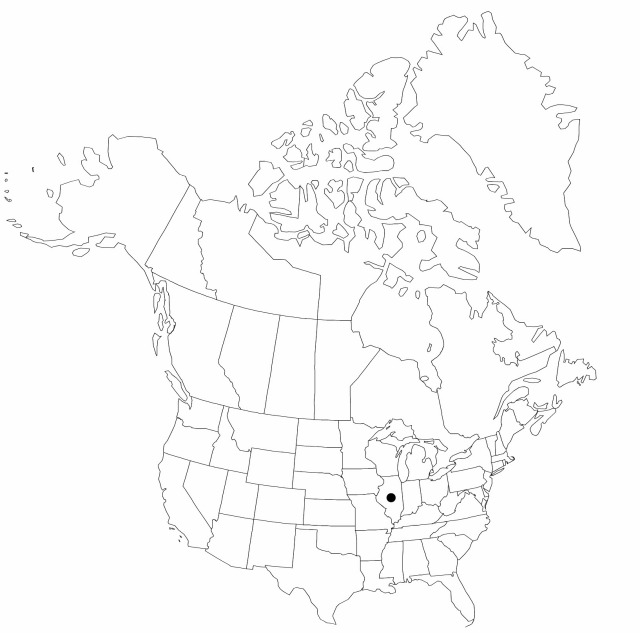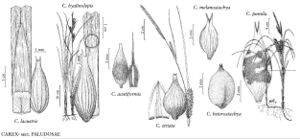Carex heterostachya
Enum. Pl. China Bor., 69. 1833.
Plants colonial; rhizomes long-creeping. Culms central, slender, trigonous, 25–60 cm, papillose and scabrous-angled distally. Leaves: basal sheaths brown, bladeless, rapidly disintegrating into fibers; ligules 0.7–1.5 mm, wider than long; blades somewhat glaucous, M-shaped, 1.5–3.2 mm wide, papillose abaxially. Inflorescences 2.5–12 cm; rachis beyond proximal pistillate spikes sharp-angled, often finely scabrous; proximal (1–) 2–3 (–4) spikes pistillate, not or barely overlapping, ascending; distal spikes erect; terminal 1 spike staminate. Pistillate scales ovate to broadly ovate, apex acute to acuminate-awned, awn to 1.3 mm, glabrous. Perigynia ascending, essentially veinless except for 2 marginal veins, ovoid, 3.1–4.5 × 1.7–2.5 mm, glabrous; beak 0.4–0.8 mm, bidentulate, teeth straight, 0.2–0.3 mm.
Phenology: Fruiting Jun–Jul.
Habitat: Dry, open or lightly shaded areas
Elevation: 200 m
Distribution

Introduced; Ill., e Asia
Discussion
Carex heterostachya is a rare introduction from eastern Asia; first discovered in 1949, it is still extant and slowly spreading at its only known North American location (A. A. Reznicek 1994).
Selected References
None.
Lower Taxa
"lengthofbody" is not declared as a valid unit of measurement for this property."shortened" is not a number.
